– 5 November, 2017
Visitors to the Govett-Brewster exhibition encounter a series of wall mounted assemblages which juxtapose Clegg's photography and the occasional found postcard alongside excerpts from key texts which underpin a series of specific journeys, complete with his underlining and hand written notes in the margins. Clegg also borrows index cards traditionally used in libraries, archives and museums on which to record memories, thoughts and quotations. Art as annotation.
New Plymouth
David Clegg
loca projects / correction
Curated by Sophie O’Brien and Tendai John Mutambu
6 August - 5 November 2017
Generally, when I walk I look down. The ground is one of the most revealing indicators of the present condition; it is more eloquent in its damages, its deterioration, its unevennesses, and irregularities of all sorts. I’m referring to the urban as well as rural ground of paths, to ground altered by humans in general, because ground in the abstract, the ground of the world, speaks different, near incomprehensible languages.
Sergio Chejfec, My Two Worlds
David Clegg’s loca projects / correction is the latest iteration of an ongoing venture which retraces locations at once real and imagined. Literature frames and guides his journeys through physical space and time, overlaying parallel processions through landscapes of the mind.
Travel is central to his process: personal pilgrimages retrace literary traditions in European locales, for example, or specific sites referred or alluded to in texts of personal significance. Drifting and purposeful, Clegg similarly traverses Aotearoa, a wandering field worker rediscovering his wider home.
Though loca projects formally began in 2015, Clegg has been working in this terrain for some years and has exhibited widely, including manifestations at The Physics Room, St Paul Street Gallery, ARTSPACE, Christchurch Art Gallery, and Dunedin Public Art Gallery.
His current exhibition at the Govett-Brewster Art Gallery grounds the project in New Plymouth where he is based, and in a building in which he has exhibited before and is exquisitely familiar. Curated by Sophie O’Brien and Tendai John Mutambu, the exhibition assembles Clegg’s recent photography, sound recordings and text from a range of sources, times and places, most gathered in New Plymouth, Christchurch and Vienna and in response to the writing of Thomas Bernhard and Sergio Chejfec.
Clegg is interested in the ideas of Michael Taussig, particularly his reconsidering of the contemporary anthropologist’s field guide as a piece of modernist literature (1). In conversation, Clegg spoke about how this could be inverted or reversed as an aesthetic methodology: that modernist (or contemporary) literature could be used as a form of field guide to accompany a physical journey.
In the reconstructed traces of Clegg’s travels—comprising his photographs, readings and reflections—the curators describe “a sense of being both in and out of place and time”. Visitors to the Govett-Brewster exhibition encounter a series of wall mounted assemblages which juxtapose Clegg’s photography and the occasional found postcard alongside excerpts from key texts which underpin a series of specific journeys. The texts bear his underlining and hand-written notes in the margins. Clegg borrows index cards traditionally used in libraries, archives and museums to inscribe his memories, thoughts and quotations. Art as annotation.
The photographic and text elements are presented on sheets of heavy white paper. The intimately scaled photographs are fixed to this backing with clear photo corners. They are glazed yet unframed, and held to the wall with museum clips. They appear as fabricated pages torn from an oversized notebook, fragments in turn retraced, reassembled and preserved by the museum’s archival impulse. One might recall Susan Buck-Morss‘ seminal work reconstructing Walter Benjamin’s vast and fragmentary Arcades Project, a further influence on Clegg’s practice.
Alongside viewing, loca projects foreground reading and listening as sensory modes of audience engagement, interconnecting these additional avenues for making meaning. The exhibition features a table loosely covered in labelled compact discs which visitors can listen to on portable CD players and headphones. They are accompanied by copies of the two principal texts. The binaural sound recordings include his readings of Austrian writer Thomas Bernhard’s Wittgenstein’s Nephew—part autobiography, part fiction—made in the Café Bräunerhof which Bernhard himself frequented.
The exhibition also engages the work of Sergio Chejfec, a Jewish Argentinian writer living in New York City. Clegg notes that in Chejfec’s My Two Worlds, the author discusses trying to find a park, and though the book is set in Brazil, Clegg believes it is likely modelled on New York’s Central Park. The artist echoes this search in post-earthquake Christchurch, looking for Hagley Park in an altered landscape; though the park remains, other navigational landmarks have disappeared. On a recent visit to central Christchurch I found myself constantly looking down to ensure a stable footing, in turn fascinated by the uneven ground and the histories it bears. For a moment I lost my orientation, only to find landmarks I would otherwise have missed.
On one level, Clegg’s pilgrimages traverse ‘non-places’ as they appear in the writings of anthropologist Mark Augé; some through his own neighbourhoods. On another level, Clegg’s complex and layered remnants of these journeys function as speculative ‘docu-fictions’ in an expanded sense of the term. The role of quotation is central here, as are the operations of fiction, memory, imagination and fantasy. In this sense it is also fitting Clegg has published texts which both document and creatively extend his practice in visual and written form.
Clegg wanted to utilise Bernhard’s Correction to orient this project (a book which also details the perils of reconstructing an abandoned or incomplete project), and although he ended up going with an alternative Bernhard publication, the title stuck. In this instance, the correction can be seen as an engagement with the Govett-Brewster’s architectural changes, an aspect of the initial invitation extended by the gallery.
The advent of the adjoining Len Lye Centre has largely reshaped visitors’ movement through the premises. The dramatic, elongated ramp seduces most visitors to move through the Len Lye Centre first, later descending in to the old building, effectively reversing the traditional flow through the galleries. However it should also be noted that the interconnected buildings and their open, porous nature offer multiple opportunities to make idiosyncratic, non-linear movements through the various spaces.
The concurrent refurbishment of the old building saw the former entrance to the existing exhibition spaces walled over. Instead, a new portal was placed on an adjacent wall to internally connect the two buildings, a subject taken up by two other artists with longstanding connections to the former architecture, Billy Apple and Matt Henry.
Clegg’s contribution to this dialogue is a similarly playful critique, extending his exhibition in to the spaces where the buildings meet, an area which would have existed outside the original structure. He lines the new corridor—a space normally reserved for corporate signage and wayfinding—with images which extend all the way to the lockers and bathrooms. Perhaps his most explicit ‘correction’ is leaving a space on the wall inside the main gallery to remember the location of the former entrance.
Clegg cites “reading in place, and the place of reading”, as central to his project. A note within one of his works reads: This fugue: Living with the folds of its overlapping events and the territories of its overlapping refrains. Like a fugue, the presentation of this poetic field work accumulates new layers in each repetition and rephrasing; and like a literary work, it shifts with each new reading.
Emil McAvoy
(1) “…I have been thinking about fieldwork notebooks as a type of modernist literature that crosses over into the science of social investigation and serves as a means of witness…” Michael Taussig, Preface, I Swear I Saw This (Chicago: Chicago University Press, 2011).

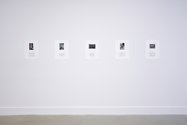




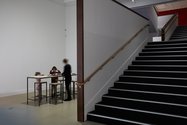







 Advertising in this column
Advertising in this column Two Rooms presents a program of residencies and projects
Two Rooms presents a program of residencies and projects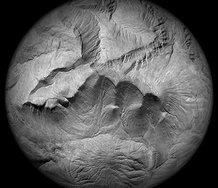
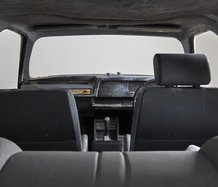
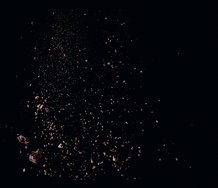

This Discussion has 0 comments.
Comment
Participate
Register to Participate.
Sign in
Sign in to an existing account.